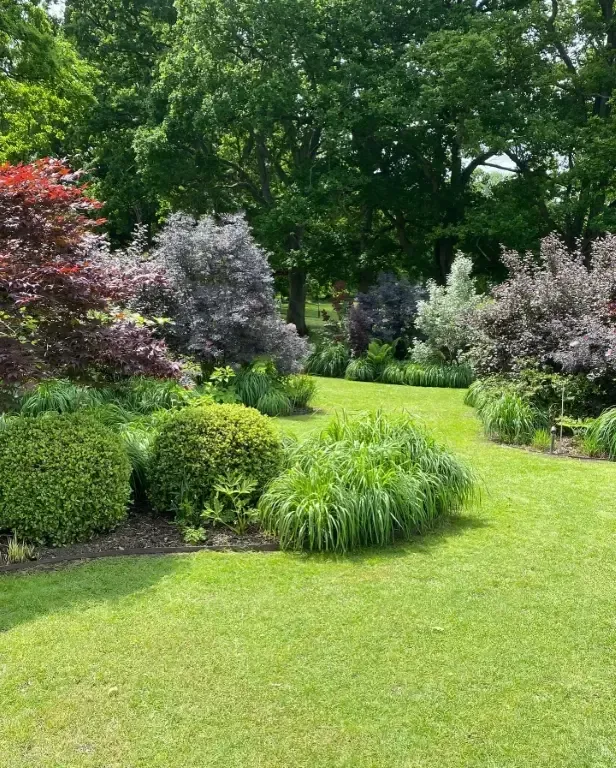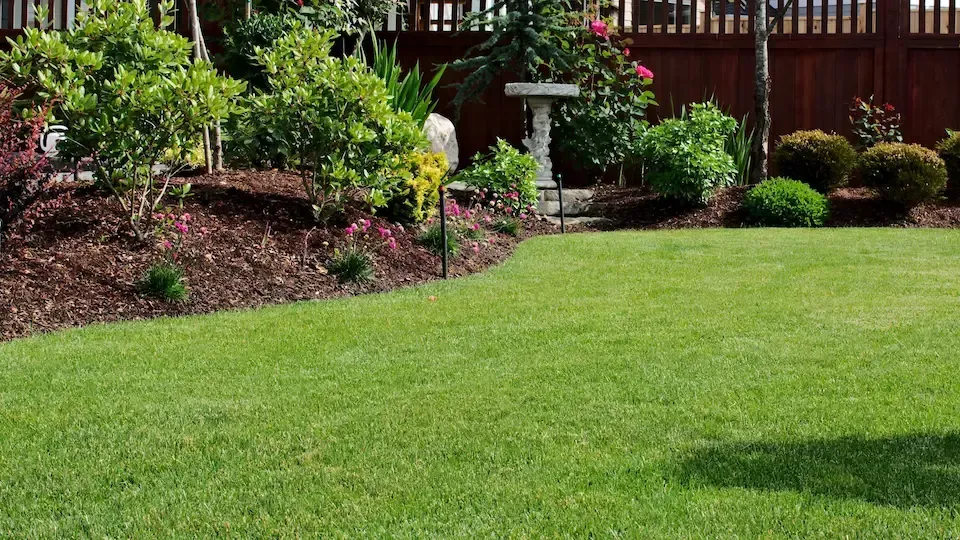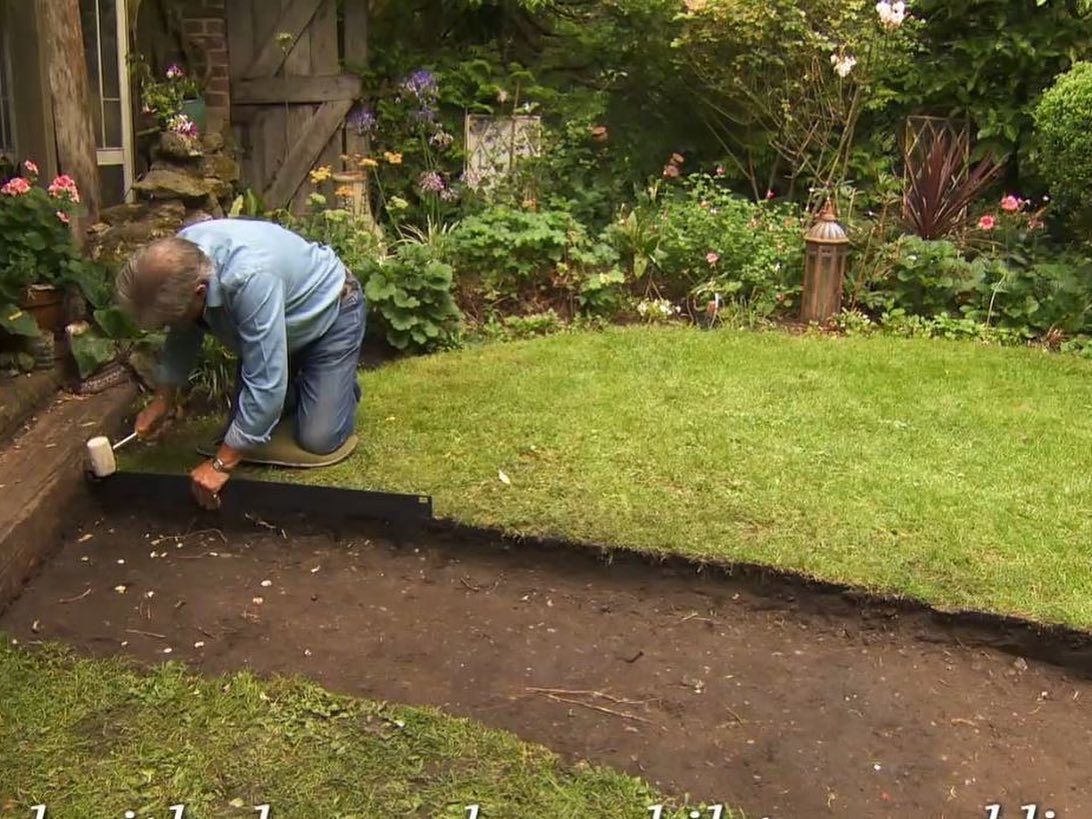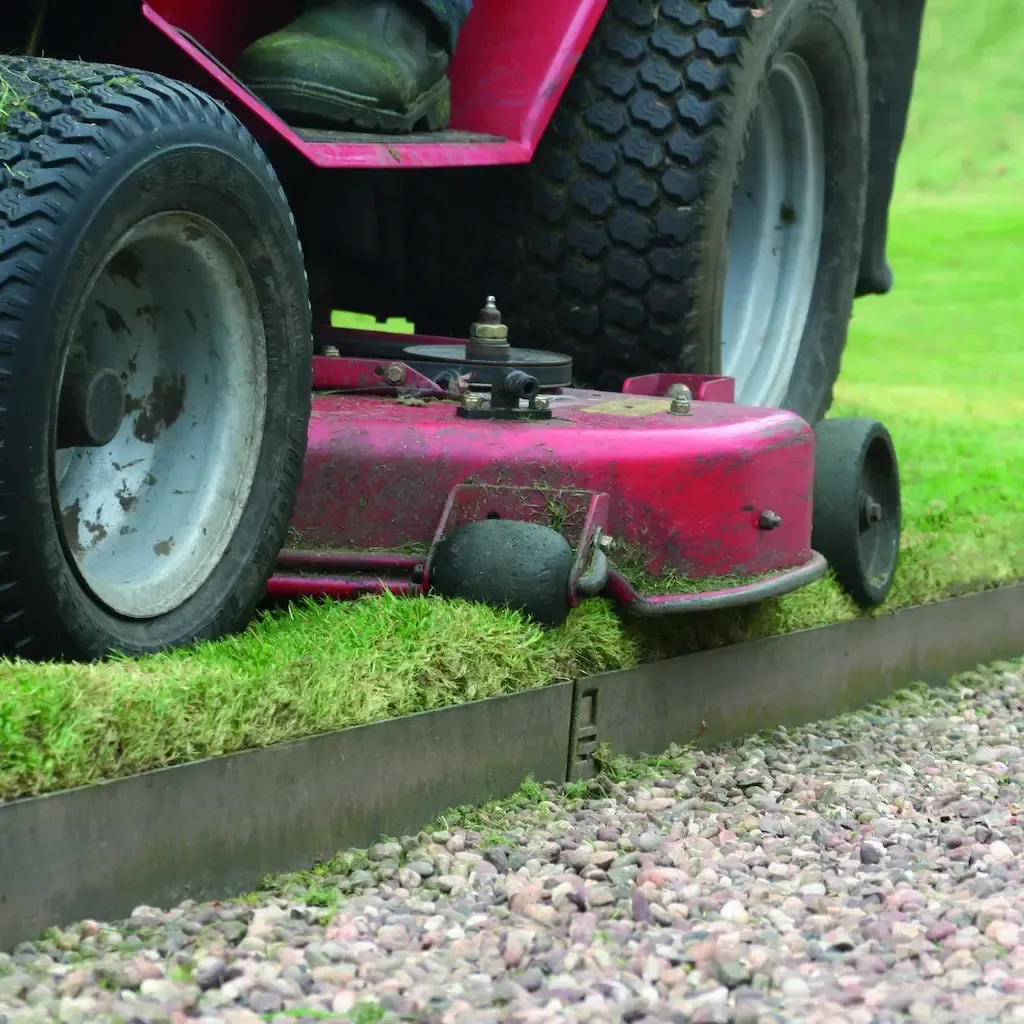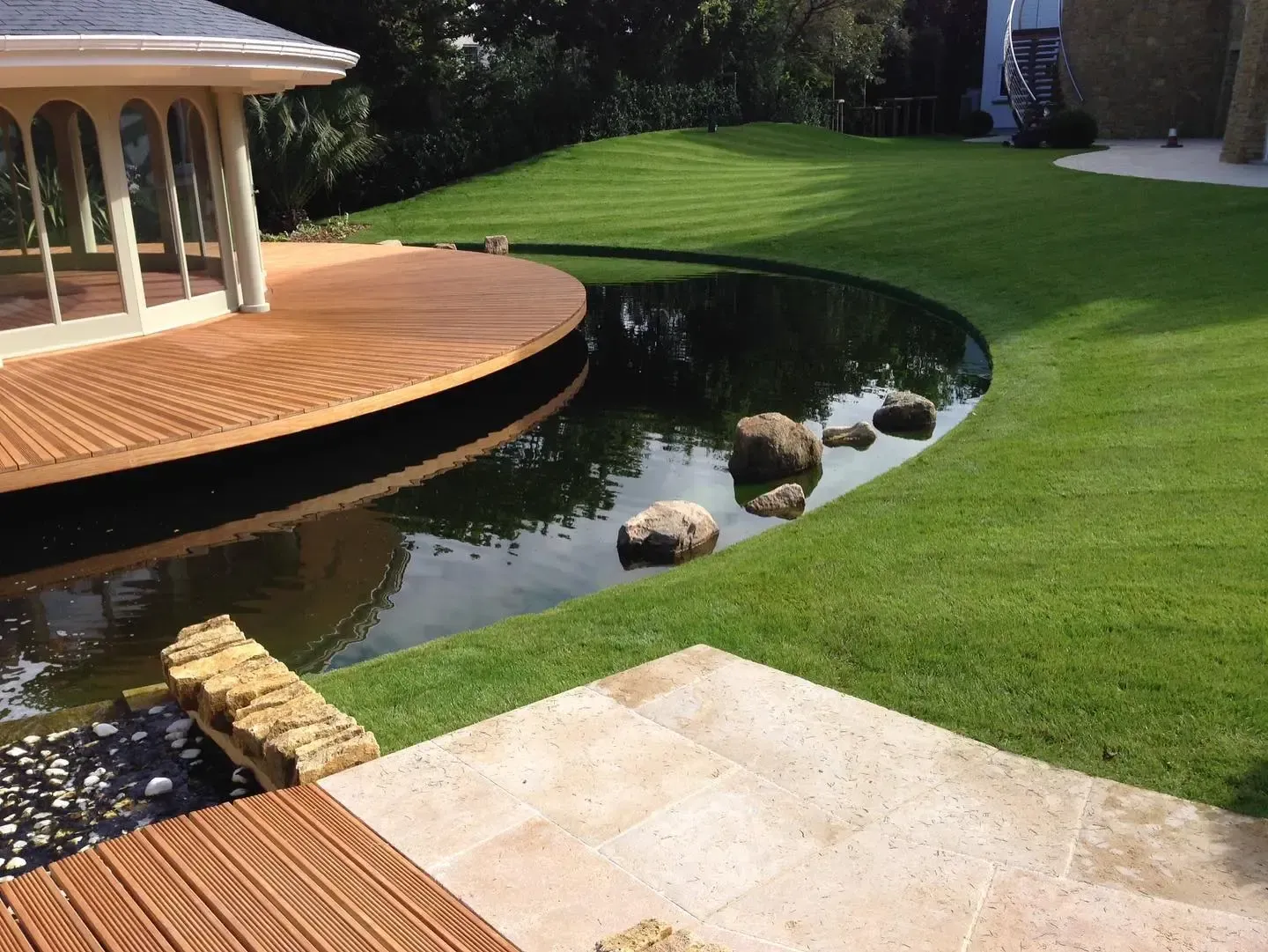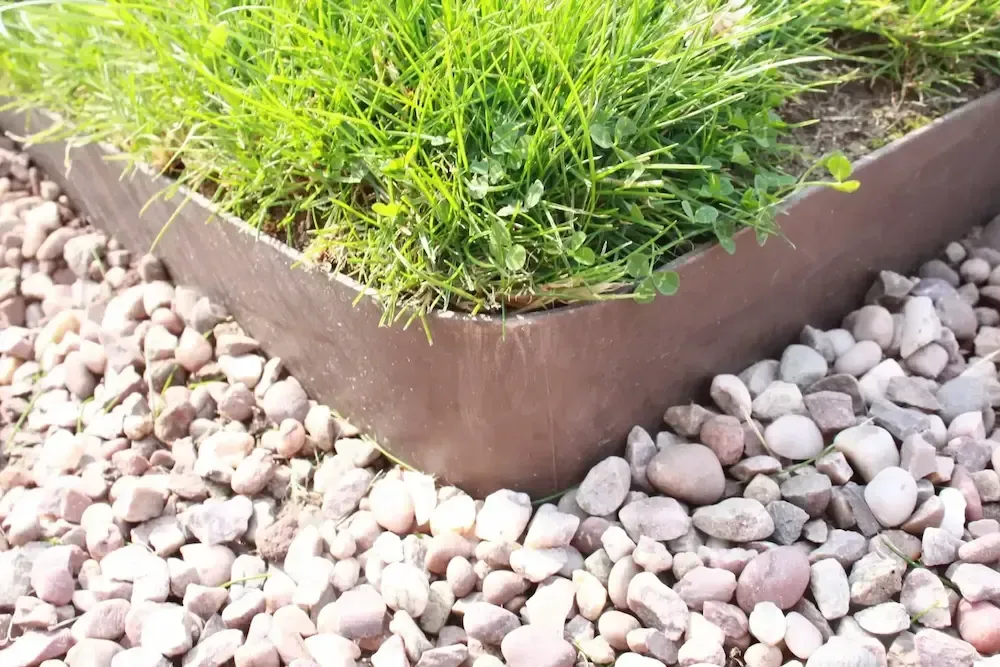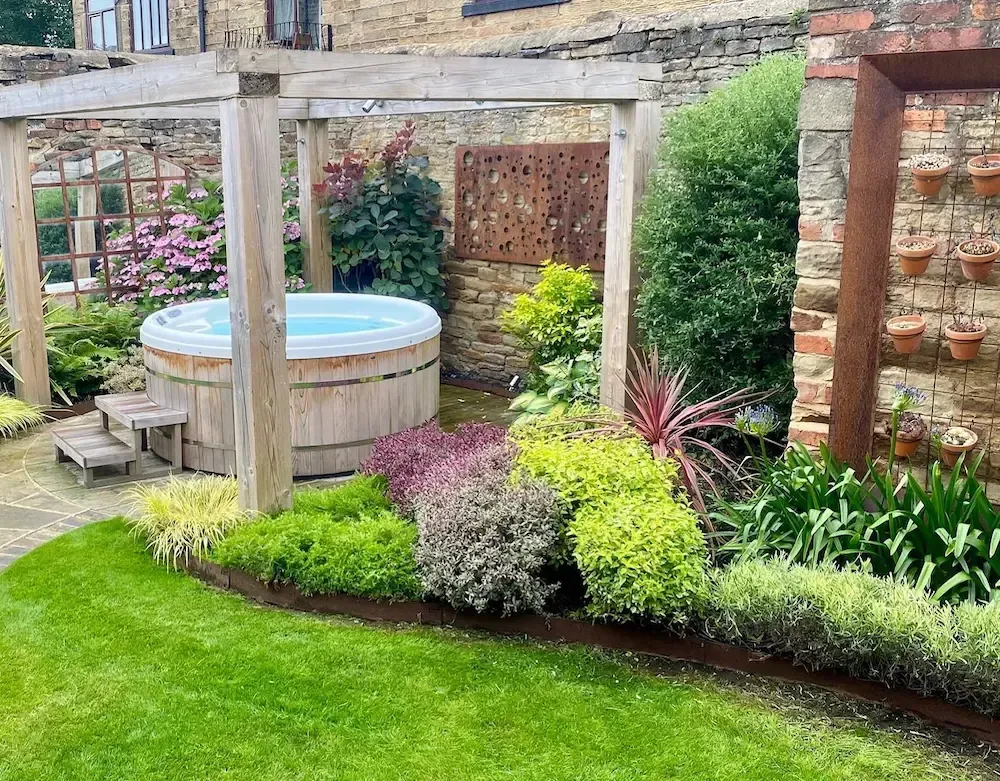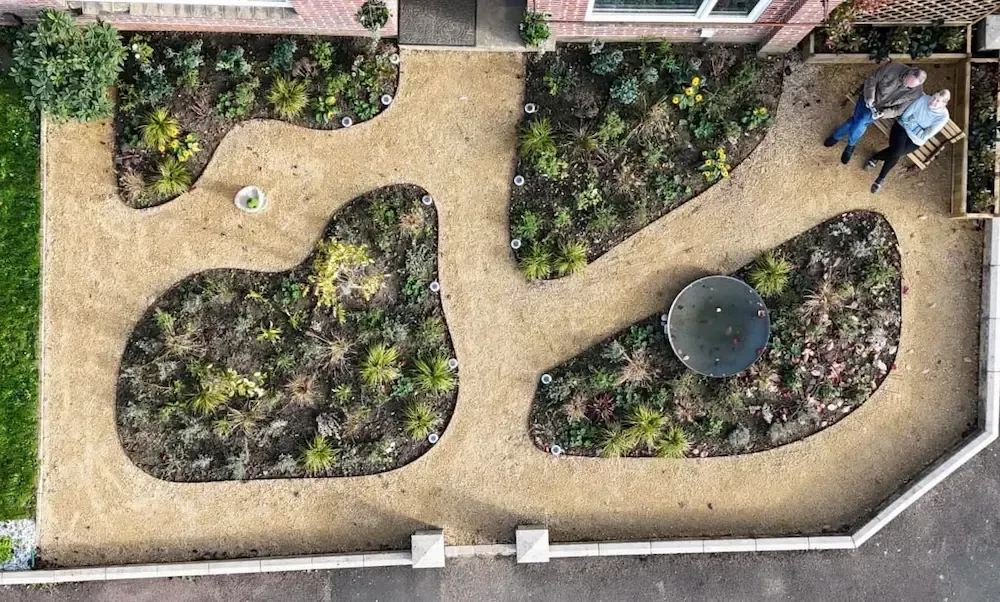Naturescaping your garden: edging design goes wild
As in all aspects of life, trends and buzzwords emerge, and garden design is no different. Naturescaping is one such example. In a world that’s rapidly urbanising, a growing movement is rising to bring us closer to nature through garden design. This trend is focused on creating landscapes that foster biodiversity, conserve resources, and invite wildlife. Naturescaping doesn't just create visually appealing gardens; it accentuates a sanctuary where nature thrives and benefits the local ecosystems.
What is naturescaping?
Naturescaping is a landscape design approach that supports local biodiversity by mimicking natural ecosystems. This method prioritises New Zealand’s native plants, which are better adapted to our local soil and climate conditions, making them easier to maintain and better for the environment. Because these plants are more resistant and resilient to the demands of the climate, they require fewer resources like water and fertiliser, compared to non-native species.
With naturescaping, gardens become ecologically harmonious spaces with a natural beauty, but bringing cohesion to these spaces calls for thoughtful planning, especially in smaller gardens, and that's where durable and eco-friendly garden edging options, like steel landscape edging, come into play.
Steel garden edging: a practical and sustainable choice
In naturescaping, edging defines spaces in an unobtrusive way, guiding foot traffic, managing garden beds, and creating clean separations between paths, lawns, and plants. While traditional materials like wood and stone may look organic, they often lack the longevity and minimal maintenance profile that steel offers. Metal landscape edging, particularly steel, provides a strong yet subtle framework that integrates seamlessly into a natural landscape – whether you are opting for a contemporary or more traditional rustic garden design.
Corten steel edging is a popular choice. Celebrated for its signature rusty patina, Corten steel develops a protective layer over time, giving it a rich, earthy hue that blends harmoniously with soil and foliage. This oxidation process not only enhances its natural look but also makes it incredibly durable, ensuring that it withstands the elements without constant upkeep. Should you wish for a guaranteed colour, Everedge Classic steel edging is an option too. Available in a brown or black it delivers a distinct polished look which contrasts beautifully with the colours of nature.
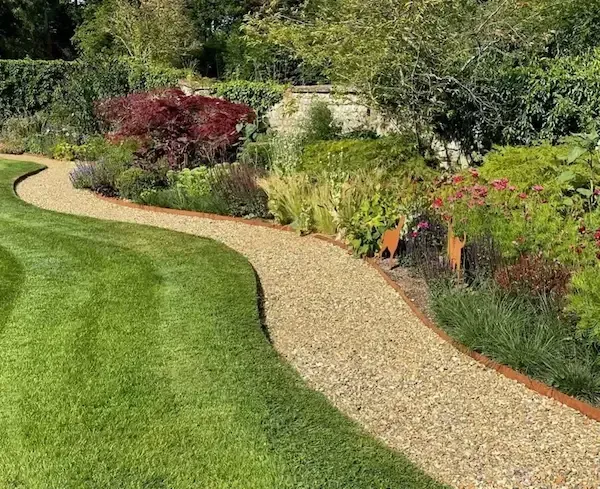
Benefits of steel garden edging in naturescaping
In addition to the aesthetic value steel garden edging brings, there are several practical advantages beneficial to a naturescaped garden:
- Longevity: steel garden edging is highly durable and corrosion-resistant, making it a long-lasting solution that doesn’t need frequent replacement. Unlike timber, which deteriorates over time, steel holds its form, ensuring your garden edging looks sharp for your lifetime.
- Low Maintenance: once installed, steel landscape edging requires minimal maintenance, making it ideal for naturescaping enthusiasts who want their gardens to flourish without the need for demands on their time.
- Flexible design options: with various options like Corten steel edging, metal tree ring edging, and custom steel landscape edging, EverEdge products can adapt to the unique curves and contours of your garden, allowing for both fluid and structured designs, contemporary and traditional.
- Plant friendly: whether you are using metal landscape edging to create smooth, defined lines between garden beds and lawns, or to distinguish a tree, the edging encourages healthy root spread and better water retention – plants don’t just survive, they thrive.
Naturescaping is more than a fad or trend; it’s a commitment to integrating natural beauty with ecological responsibility. Incorporating sustainable elements like steel landscape edging enhances the overall garden structure while preserving the principles of conservation and biodiversity to become a haven for both people and wildlife.
If you would like to learn more about how EverEdge can be used in your garden design, or have any queries, contact us on 021 925 389 or email simon@everedgenz.co.nz.


